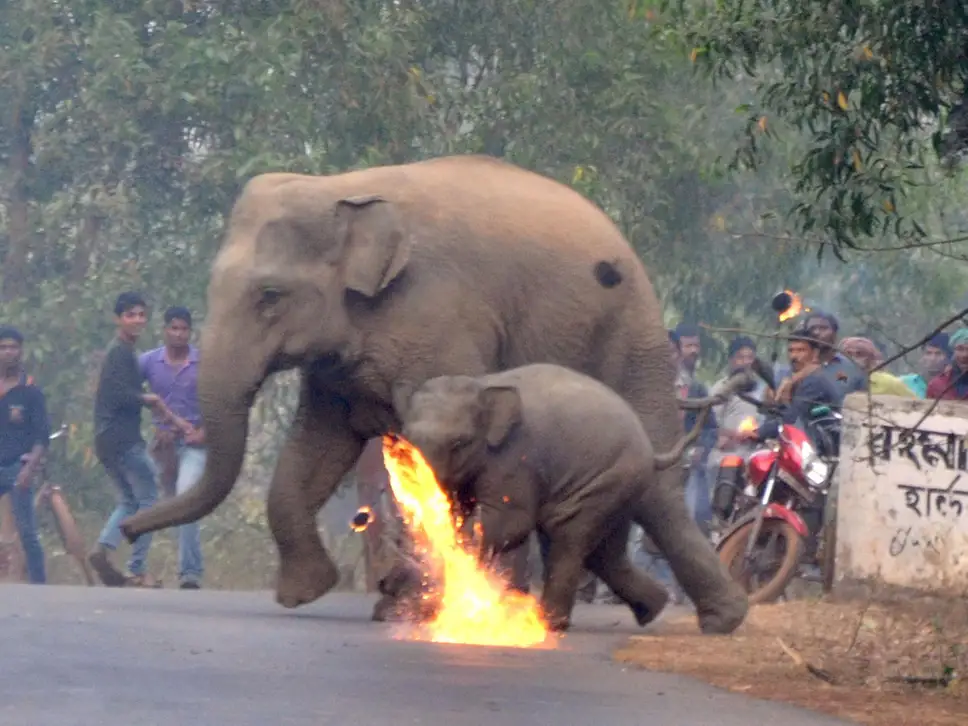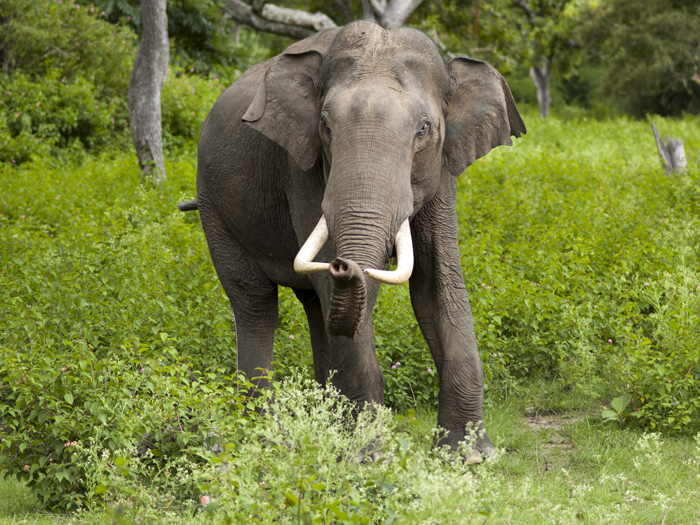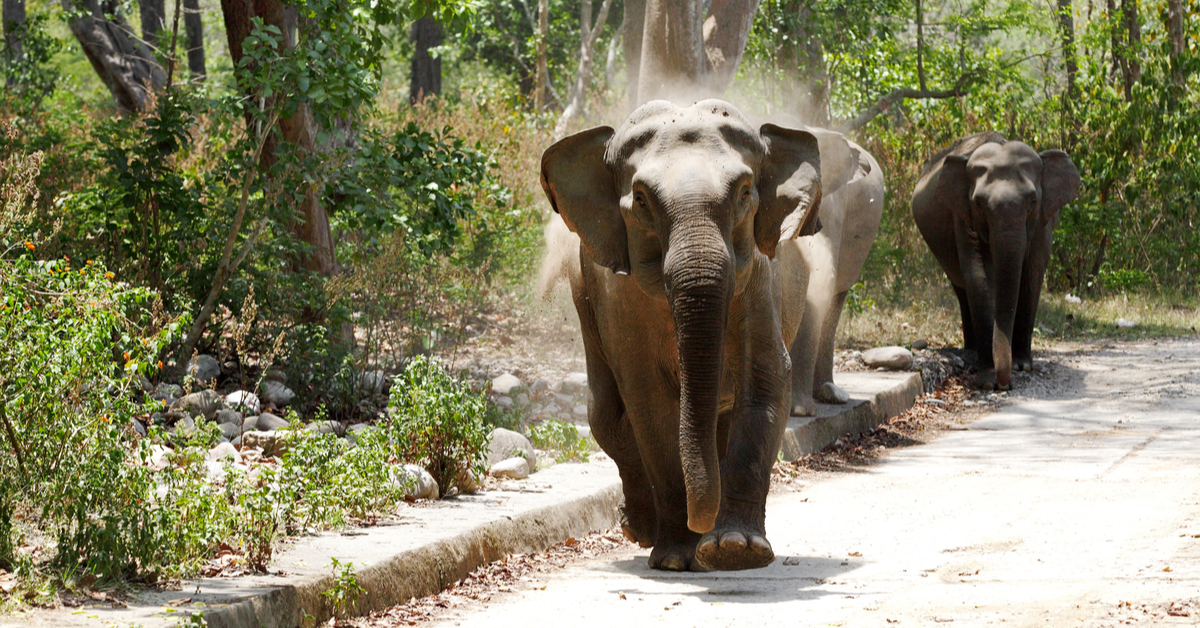A Premiere Daily Highlight Story: Sometimes there are stories that are just too impactful to keep locked away. That’s why we scour the archives and bring some of them back to experience again. They may surprise you, make you smile, or even shed a tear, but they’re always meant to add a little extra to your day.
You may have seen the harrowing images of two elephants escaping a firefight. The sad part? Those balls of fire are being hurled toward them.
The heartbreaking event occurred in 2019 in the Indian village of Bishnupur in West Bengal. As reported by the Independent, a group of men began attacking the elephants because they had damaged villagers’ crops. (1)
Historically, India has revered the elephant. Sadly, however, increasing rates of deforestation are causing many to leave their habitat and come into conflict with humans.
But as elephants — an endangered species — find themselves trying to survive with less and less natural habitat, their conflict with humans is ever-increasing.

Biplab Hazra, a photographer who managed to capture some photographs of the incident, told Caters News Agency: (2)
“This happens because the villagers have to save their crops. There are many elephant corridors in human habitations. I’m trying to show this and spread my photos to increase public awareness on the matter.”
Facts about the Indian elephant
Indian elephants, according to the World Wildlife Fund, (3) feed on grasses (mostly), tree bark, roots, leaves, and small stems. They also sometimes eat bananas, rice, and sugarcane.
They feed for about 19 hours per day and produce up to 220 pounds of dung in the same amount of time.
Read: Do animals have feelings? This baby elephant cried for 5 hours after his mother rejected him
Why does this matter?
As Indian elephants wander an average of 125 square miles per day, the dung they produce helps disperse germinating seeds.
Ironically, humans are attacking the very animal that can play a crucial role in their crop production.
Another reason why preserving their species is that Indian elephants help maintain the forests’ and grassland habitats’ integrity.
Currently, there are an estimated 20,000 to 25,000 Indian elephants left. In combination with attacks like the one above, illegal encroachment into protected areas for the sake of developments (e.g., roads and commercial establishments) are leaving them without:
- Reliable food sources
- Shelter
- Other herds, which can isolate populations and prevent them from following migratory routes
Without a reliable food source or shelter, the endangered species will find its way to farms, settlements, plantations — anything they can find to survive.

Oftentimes, elephants can cause anywhere from a few thousand to millions of dollars (e.g., on small local farms or large agricultural operations) of damage. During these clashes, an average of 100 humans and 40 to 50 elephants are killed every year in crop raids. (4)
Unfortunately, the human-elephant conflict is evident and it doesn’t seem like that will change. But, as Asian Species Expert, Dr. Barney Long, says:
“As South Asia’s population explodes, elephants are getting squeezed into smaller areas leading to major conflicts, we need to champion solutions that help both elephants and people.”
In an interview with The Sun, (5) Dr. Liz Greengrass, head of conservation at the British charity Born Free, shared a way to make this possible.
“The future of the Asian elephant in India depends on their ability to use corridors between forest tracts. However, for this to be possible, we have to make sure that peoples’ safety and livelihoods are secured within these corridors.”
What you can do to help Indian elephants
If you have a deep love for wildlife, check out what you can do to make a tangible difference right here.
Keep Reading: A Photographer Captured The Last Images of Kenya’s ‘Elephant Queen’ Just Before Her Death
This article originally appeared on The Hearty Soul in May 2019 and has been published here with permission.

